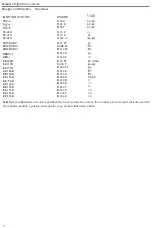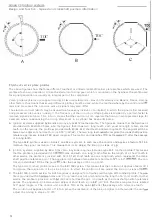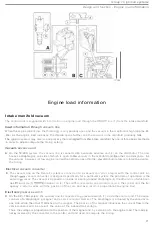
Group
28
Ignition systems
Design and
function
- General
B
A
c
o
II
I
1
1
1
Ignition systems - basic parameters
Th
e ignition
system control unit
must
be supplied
with
certain basic
information
in order
to
compute
the frequency
o
r r
a
t
e a
t
w
h
ich
HT
ignition
pulses
must be delivered
to
the spark plugs,
when
(in
relation to the position
of
t
he par-
t
icula
r
piston before TOG)
each pulse must be generated and
to
which
plug
the
pulse
is
to be
delivered.
T
he
signals
requi
r
ed for this purpose
are
derived from the
engine speed (A), engine load (B) and crankshaft
position
(G).
Speed information
A
.
T
he
engine speed provides information on the number of ignition pulses which must be generated per
unit
of
time.
T
he number
of
high-tension
(HT)
pulses
delivered to the plugs must be increased as the engine speed
rises.
The speed
signal is
the
most vital piece of
information
supplied
to
the control unit. For example,
the
engine cannot
be
started in
this
signal
is
unavailable.
T
he control unit a
lso
uses
the
engine
speed
to
determine
the
point at which
the
ignition
pulse
must be delivered in
r
elation
to the position
of
the piston
before
TOG.
Ignition must
take
place earlier at higher speeds since the
upward
and
d
ownward
movement
of
the
pistons is faster under these conditions. As a result, the
time
available for combus-
tion of the fue
l
/
air
mixture is less and the timing must be advanced
to
ensure
that
the mixture is burned as comple
t
e-
l
y
as possible.
Load information
B
.
Except
in
turbocharged
engines, the engine
load
varies
with the
vacuum in
the
intake manifold.
A
t
low
l
oads, the
th
r
ott
l
e
is
only partially
open and
the
flow of induction air is low, resulting in a high vacuum.
At higher loads, the
thro
ttl
e opens wider
and more air is supplied
to the
engine. Under these conditions,
the
vacuum in
the
manifold ap-
p
r
oaches closer
to atmospheric pressure
as
the
load is increased. It follows from
this
that a greater quantity of fuel/
air mixture is
available
for
combustion as engine load increases and
that the
higher volume of gas
produced
rein-
f
o
r
ces
t
he pressure
due
to
compression. Since the rate of combustion is accelerated by higher gas compression,
the
t
iming is retarded as engine load is
increased
.
At low engine loads, on
the
other hand.
the timing
may be advanced
t
o compensate
for the
low
er rate
of
combus
t
ion
and
to improve
fuel utilization.
Crankshaft po
s
ition information
C
.
The
crankshaft position
(i.e.
angle
)
provides information on the position of each piston in
rela
t
ion
to
TOC.
This
formation
is essential to
the
system control functions. which compute
the timing
continuously on this basis.
11














































